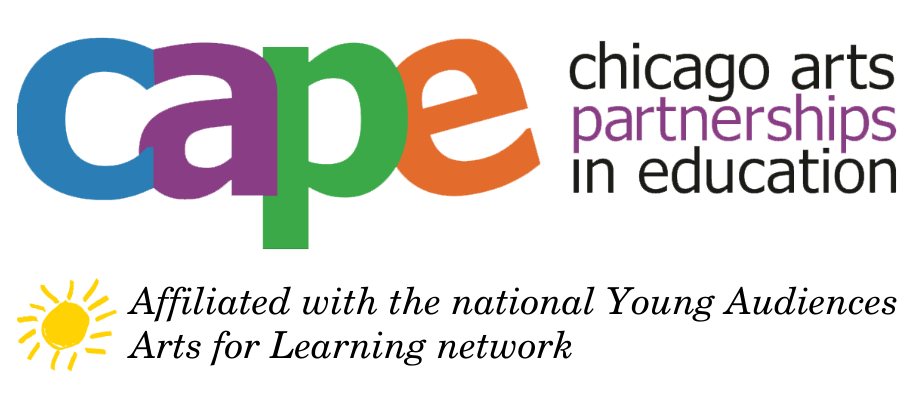100 Days of Quaranzine by Marc Fischer

Publishing is at the core of my creative practice. Since the late 1990s I’ve worked on or self-published over two hundred works—from double-sided sheets of paper to booklets to newspapers and full length books, with at least as many collaborators. Some publications have been printed in runs of a couple dozen copies. Others have print runs of over 10,000. Printed publications extend ideas to new audiences in a highly democratic and efficient way. I love watching printed things move through the world and I love exposing students to publishing.
I’ve worked with CAPE as a Teaching Artist for almost 10 years and publishing projects with students have been a big part of that history. I will never forget one student telling me about how when she posts her art on social media platforms, people would only notice it for about a day and then it would disappear from their attention. Sometimes people would make negative comments about her art, and she didn’t like the way the platform she was using gave people an opportunity to tear her work down in the same space that she was sharing it. Tactile, printed publications existed in a space outside of that digital world and could circulate in other ways.

Before Covid-19 emerged and our schools shut down, my afterschool group completed a zine about the 14-day Chicago Teachers Union strike in 2019, and we published a conversation about what the students did during that time when they were at home, not attending school. Little did we know that this would be a practice run for a much longer period of not physically being in school. As a Teaching Artist, my work was suspended for the rest of the year during Covid. Two days into the lockdown, on March 15th, I published the first issue of QUARANZINE, a single-sheet publication dedicated to creative work produced during the Covid-19 pandemic. I was produced under the imprint of my project named Public Collectors.
QUARANZINE was a daily publication, with each issue printed on the front and back of an 8 1/2 by 11-inch sheet of paper. I produced 100 printed issues between March 15 and June 22, 2020 in runs of about 150 copies each. Most of the 100 issues were made with collaborators, and all were coordinated over email to maintain safe social distancing. Some collaborators were people I’ve never met in person. I did the printing at home in my basement, mainly with leftover paper and ink from other projects. I packaged the issues in assortments of twelve issues that people bought online to support the project and keep it going. I also posted copies on utility poles, dumpsters, electrical boxes, and other surfaces in my neighborhood (Avondale) so that people could see it while they were out walking and getting fresh air. Finally, I scanned the front and back of every issue and posted those scans on Facebook and my Tumblr for Public Collectors.
My experiences working with high school students at CAPE have helped me to see that a complete publication can be small and quickly produced and still resonate with readers. Collaborations don’t have to last months or years to be productive. Most of the issues of QUARANZINE were created from start to finish in a single day. Some of the issues, like zines I have made with students, took the form of conversations—in this case email exchanges with other people—that we published, and that was our work for that issue.

Marc Fischer and Katy Jung’s North-Grand High School afterschool students assembling their zine series “Curious Endings” in Spring 2024.
I had no expectations for the project except to do something with others that would hopefully keep us creatively active and sane during a period of great challenge. The project ended up getting a lot of love and people told me that they looked forward to logging onto Facebook or visiting Tumblr to see what I produced each day. Sometimes I barely beat the clock and would post a new issue at 11:30 PM, only to do the same thing at some point the next day. Complete collections of every issue of QUARANZINE were acquired by multiple libraries and museums include the DePaul Museum of Art in Chicago, and the Metropolitan Museum of Art and Museum of Modern Art, in New York. Another set made it as far as New Zealand.

I did not work with any of my high school students on this project—CPS was not set up to continue after school projects during the period that I was publishing—but I did feature the work of other high school age students through the coordination of friends with teenage (or younger) children, as well as teachers and relatives of young artists.
You can see over thirty publications from this project in the exhibit Practices in Proximity. I’m grateful to CAPE for showing so many of these publications. The exhibit is generous in giving viewers a window into complex projects that can’t be understood through just one or two works on a wall. I’m happy with the way that generosity provides an expanded view of this work.






